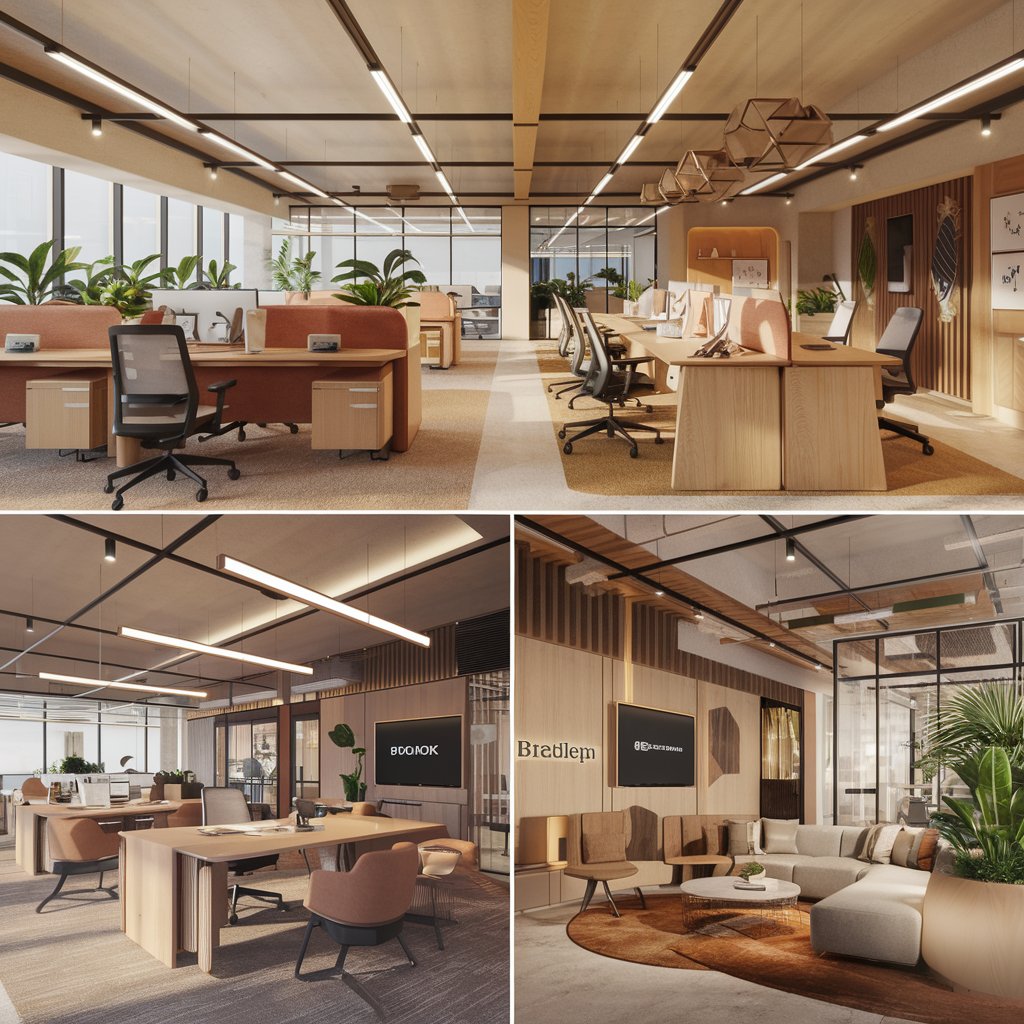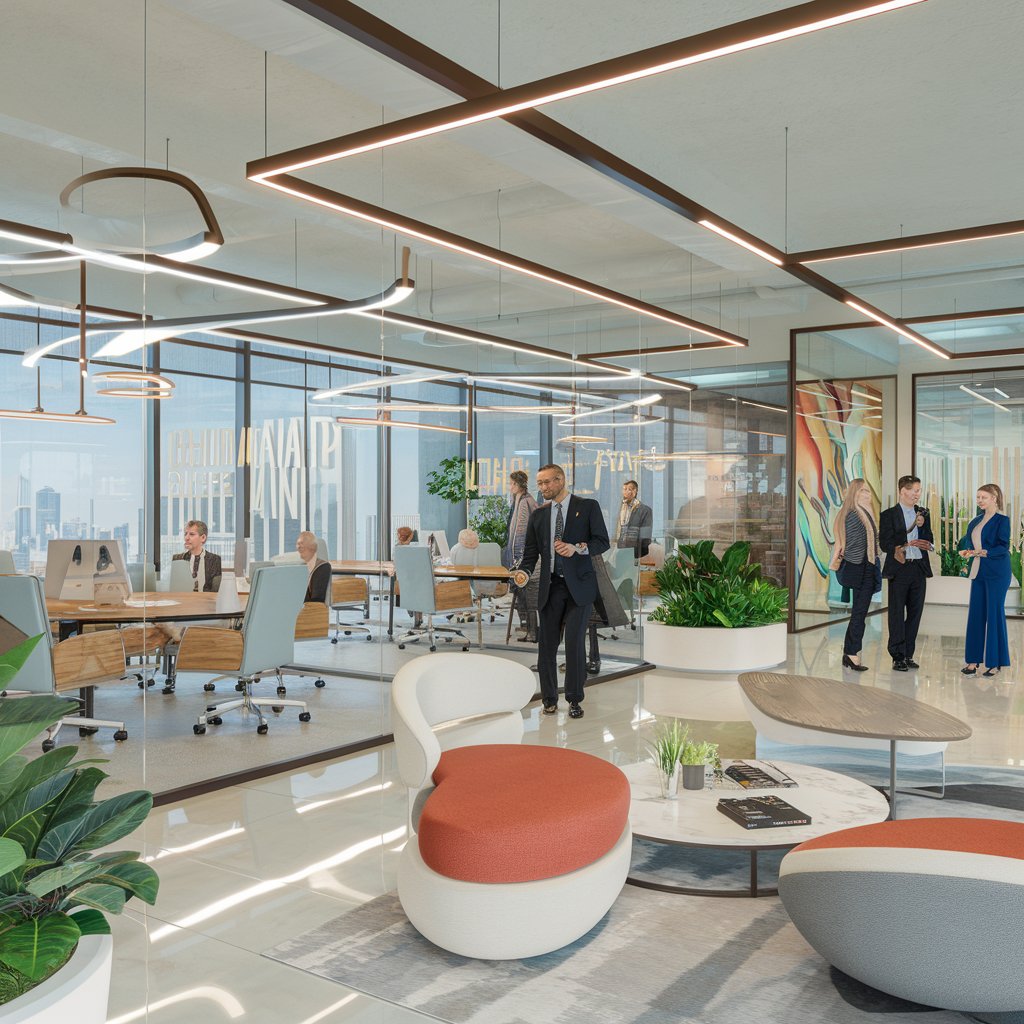A well-designed office is more than just a workspace—it’s a place that fosters productivity, creativity, and employee well-being. As businesses evolve, so do office interior design trends. In 2025, modern workplaces are shifting towards functional, aesthetic, and employee-centric designs that enhance efficiency and comfort.
If you’re looking to revamp your office, here are the top office interior design trends that will help you create a productive and inspiring workspace.

Flexible and Multi-Functional Workspaces
Gone are the days of rigid office layouts. Modern offices now incorporate open floor plans, hot desking, and modular furniture to allow seamless collaboration and adaptability.
Key Features:
Adjustable desks for sitting or standing work
Moveable partitions for easy space customization
Co-working areas with shared tables and lounge seating
Tip: Invest in furniture that can be easily rearranged to accommodate different work styles and team sizes.
Biophilic Design: Bringing Nature Indoors
Biophilic design is all about incorporating natural elements into office spaces to improve employee well-being, reduce stress, and boost creativity.
How to Implement Biophilic Design:
Add indoor plants like snake plants, pothos, or succulents
Use natural materials like wood, stone, and bamboo
Maximize natural light with large windows and glass partitions
Introduce living walls or green panels for a refreshing atmosphere
Trend Alert: Many corporate offices are integrating indoor gardens and hydroponic plant walls to create a calming work environment.
Smart Office Technology and Automation
Technology is reshaping office spaces, making them smarter, more efficient, and employee-friendly.
Must-Have Smart Office Features:
Automated lighting and climate control for energy efficiency
Smart desks and chairs that adjust based on user preference
Voice-activated assistants for hands-free office control
Wireless charging stations and cable-free workstations
Tip: Smart lighting systems with adjustable color temperatures can improve focus during the day and promote relaxation in break areas.
Ergonomic and Employee-Centric Workspaces
Employee well-being is at the heart of modern office interior design. Investing in ergonomic furniture and wellness-focused designs can enhance comfort and reduce workplace fatigue.
Ergonomic Office Essentials:
Height-adjustable desks to promote movement
Ergonomic chairs with lumbar support
Anti-fatigue mats for standing desks
Breakout zones and relaxation areas for stress relief
Trending Now: Many companies are setting up wellness rooms for meditation, power naps, and relaxation.
Minimalist and Clutter-Free Design
A minimalist office interior promotes focus, clarity, and efficiency. Clutter-free spaces are proven to enhance productivity by reducing distractions.
How to Achieve a Minimalist Office Look:
Use neutral color palettes like white, gray, and soft pastels
Opt for sleek, modern furniture with clean lines
Implement hidden storage solutions to keep workstations tidy
Limit decorative elements to essential, functional pieces
Tip: Decluttering your office improves not only aesthetics but also workflow and organization.
Collaborative Workspaces and Creative Zones
Today’s work culture encourages team collaboration and idea-sharing. Offices are incorporating brainstorming zones, informal meeting areas, and creative lounges to foster teamwork.
Key Features of Collaborative Spaces:
Comfortable seating areas with sofas, bean bags, or pods
Whiteboard walls and interactive screens for brainstorming
Acoustic panels to reduce noise distractions
Trend Alert: More offices are replacing traditional conference rooms with informal lounges that inspire creativity and teamwork.
Sustainable and Eco-Friendly Office Interiors
Sustainability is a major focus in 2025 office interior design, with businesses opting for eco-friendly materials and energy-efficient solutions.
Sustainable Office Design Elements:
Recycled and upcycled furniture to reduce waste
Energy-efficient LED lighting for cost savings
Solar panels and green energy sources to lower carbon footprints
Non-toxic, VOC-free paints and materials for healthier indoor air
Tip: Incorporating eco-conscious materials helps the environment and enhances corporate social responsibility.


